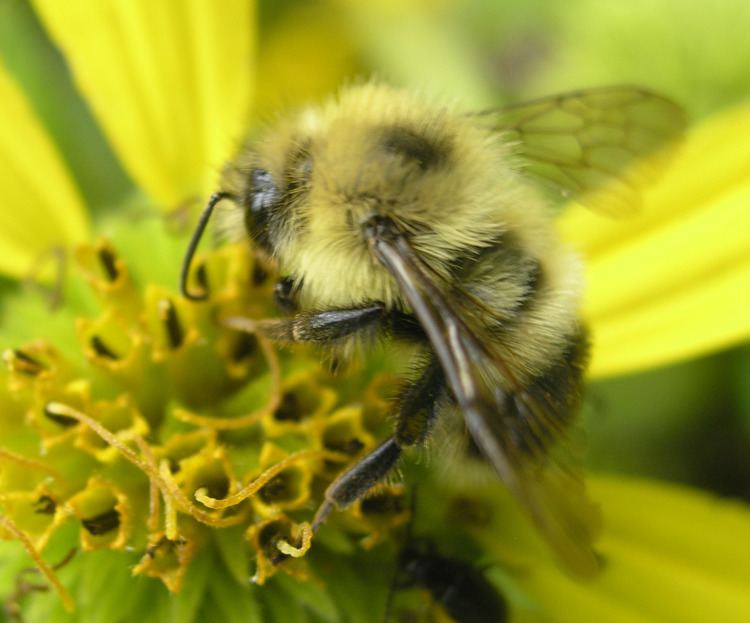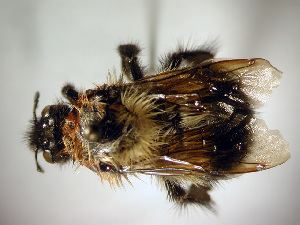Rank Species | Subfamily Apinae | |
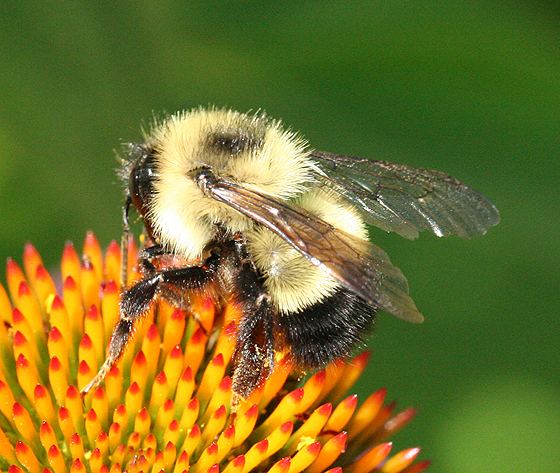 | ||
Similar Bombus perplexus, Two‑spotted bumble bee, Bombus griseocollis, Bombus ternarius, Bombus citrinus | ||
The half-black bumblebee (Bombus vagans) is a small bumblebee with a wide distribution in North America, its range extending from Ontario and Nova Scotia southward to Georgia.
Contents
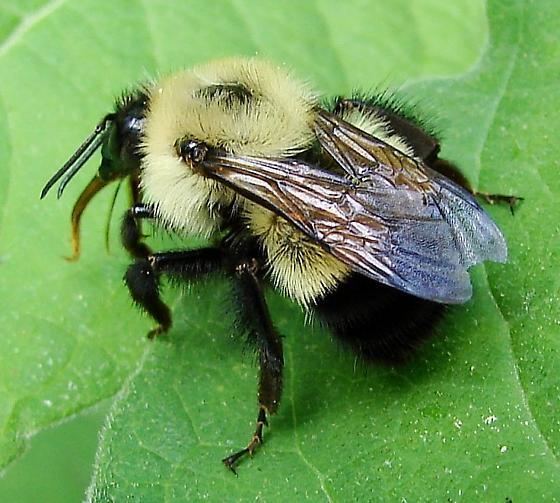
Description
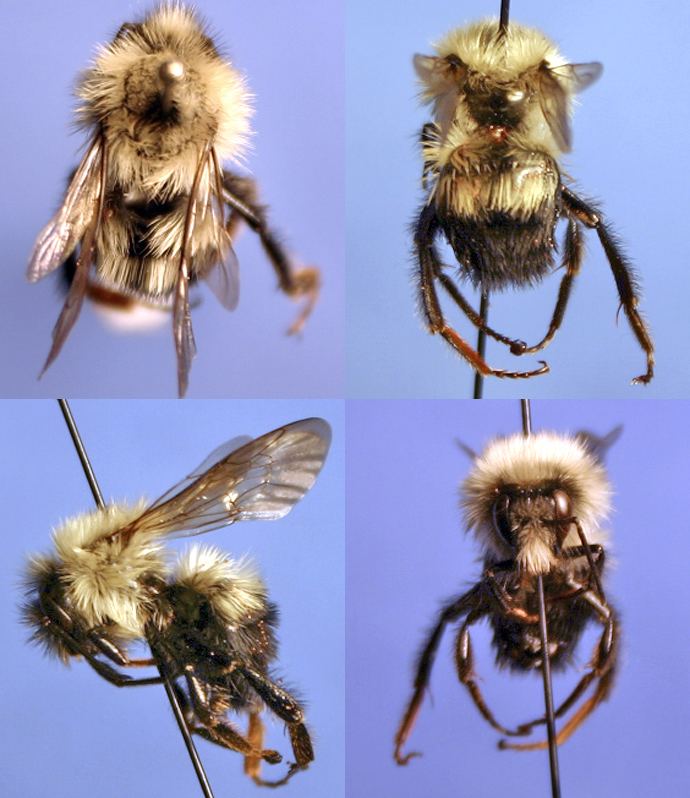
Bombus vagans is a common species of bumblebee with a medium-length tongue. The head, thorax and first two segments of the abdomen are yellow while the rest of the abdomen is black. The face has a mixture of yellow and black hairs and the thorax is densely clad in shaggy yellow hair except for a smooth central portion which is bare and shiny. The first two abdominal segments bear yellow hairs and the remainder of the abdomen is clad in black hairs. The underside of this bee and the legs are black. Similar species with which it can be confused include Bombus sandersoni (which is slightly smaller), Bombus perplexus, Bombus impatiens and Bombus affinis.
Behavior
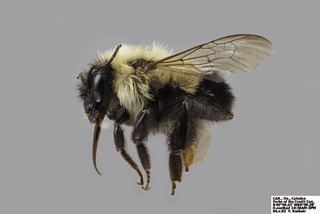
This bee emerges from hibernation quite late in the year with the first queens being seen in early May in Maine, and workers being on the wing from June to August. but in more southerly locations it nay be seen a month earlier than this. The queen favors apple and plum blossom while the workers appreciate red clover, Penstemon, Asclepias (milkweed), Cirsium (thistle), Eupatorium and Spiraea (meadowsweet). Unlike most other species of bumblebee in the region, it forages in shady forest habitats. Drones are often to be seen late in the season on aster and goldenrod.
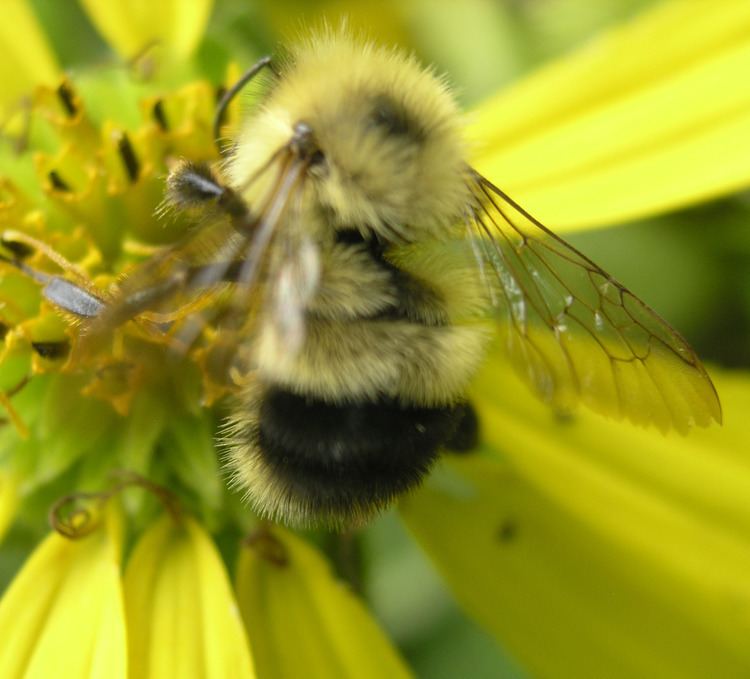
Nests are usually on the surface of the ground or in holes in the ground and at its peak, the colony may have about seventy workers. The nest is sometimes parasitized by the cuckoo bumblebee Bombus citrinus. The parasitic protozoan Apicystis bombi sometimes parasitizes this species.
